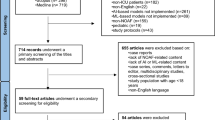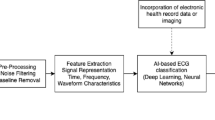Summary
A large number of patients implanted with dual-chamber pacemakers exhibit symptoms of recurrent or new atrial fibrillation. Scheduling follow-up visits for every 6–12 months in this setting may be disadvantageous on three grounds. First, delayed information about the onset of atrial fibrillation does not allow an immediate reaction with pharmacological or dedicated pacing therapy. Second, the efficacy of the chosen therapy cannot be evaluated until the next scheduled follow-up. Third, real-time awareness of a significant atrial fibrillation burden is critical to use appropriate anticoagulation therapy for the prevention of thromboembolic events. The new Home Monitoring technology (Biotronik, Berlin) offers real-time transmission of diagnostic data stored in the pacemaker memory to the physician. This may represent a useful tool for the detection and treatment of patients with atrial fibrillation. Daily documentation of atrial rhythm via Home Monitoring allows a quick reaction to the onset of atrial fibrillation and real-time control of the therapeutic efficacy. The ongoing, international, randomized Home-PAT clinical trial aims at defining and quantifying the importance of Home Monitoring for the diagnosis and treatment of atrial fibrillation in patients with dual-chamber pacemakers.
Similar content being viewed by others
References
AFFIRM Investigators (2002) A comparison of rate control and rhythm control in patients with atrial fibrillation. N Engl J Med 347:1825–1833
Blanc JJ, De Roy L, Mansourati J, Poezevara Y, Marcon JL, Schoels W, Hidden-Lucet F, Bernay C (2004) for the PIPAF Investigators. Atrial pacing for prevention of atrial fibrillation: assessment of simultaneously implemented algorithms. Europace 6:371–379
Carlson MD, Ip J, Messenger J, Beau S, Kalbfleisch S, Gervais P, Cameron DA, Duran A, Val-Mejias J, Mackall J, Gold M for the ADOPT Investigators (2003) A new pacemaker algorithm for the treatment of atrial fibrillation. Results of the Atrial Dynamic Overdrive Pacing Trial (ADOPT). J Am Coll Cardiol 42:627–633
Corley SD, Epstein AE, Di Marco JP et al (2004) AFFIRM Investigators. Relationship between sinus rhythm, treatment and survival in the Atrial Fibrillation Follow-up Investigation of Rhythm Management (AFFIRM) Study. Circulation 109:1509–1513
Defaye P, Dournaux F, Mouton E (1998) Prevalence of supraventricular arrhythmias from the automated analysis of data stored in the DDD pacemakers of 617 patiens: the AIDA Multicenter Study Group. Automatic Interpretation for Diagnosis Assistance. PACE 21:250–255
Fetsch T, Bauer P, Engberding R, Koch HP, Lukl J, Meinertz T, Oeff M, Seipel L, Trappe HJ, Treese N, Breithardt G for The Prevention of Atrial Fibrillation after Cardioversion Investigators (2004) Prevention of atrial fibrillation after cardioversion: results of the PAFAC trial. Eur Heart J 25:1385–1394
Fuster V, Ryden LE, Asinger RW et al (2001) ACC/AHA/ESC guidelines for the management of patients with atrial fibrillation: executive summary: a report of the American College of Cardiology/American Heart Association Task Force on Practice Guidelines and the European Society of Cardiology Committee for Practice Guidelines and Policy Conferences (Committee to Develop Guidelines for the Management of Patients With Atrial Fibrillation). J Am Coll Cardiol 38:1231–1265
Glotzer TV, Hellkamp AS, Zimmerman J, Sweeney MO, Yee R, Marinchak R, Cook J, Paraschos A, Love J, Radoslovich G, Lee KL, Lamas GA (2003) for the MOST Investigators. Atrial high rate episodes detected by pacemaker diagnostics predict death and strokes. Report of the atrial diagnostics ancillary study of the Mode selection Trial (MOST). Circulation 107:1614–1619
Israel CW, Gronefeld G, Ehrlich JR, Li YG, Hohnloser SH (2004) Long-Term risk of recurrent atrial fibrillation as documented by an implantable monitoring device. Implication for optimal patient care. J Am Coll Cardiol 43:47–52
Kaufman ES, Zimmermann PA, Wang T, Dennish GW, Barrell PD, Chandler ML, Greene HL and the AFFIRM Investigators (2004) Risk of proarrhythmic events in the Atrial Fibrillation Follow-up investigation of Rhythm Management (AFFIRM). A multivariate analysis. J Am Coll Cardiol 44:1276–1282
Lee MA, Weachter R, Pollak S, Kremers MS, Naik AM, Silverman R, Tuzi J, Wang W, Johnson LJ, Euler DE for the ATTEST Investigators (2003) The effect of atrial pacing therapies on atrial tachyarrhythmia burden and frequency. Results of a Randomized Trial in patients with bradycardia and atrial tachyarrhythmias. J Am Coll Cardiol 41:1926–1932
Olshansky B, Rosenfeld LE, Warner AL, Solomon AJ, O’Neill G, Sharma A, Platia E, Feld GK, Akiyama T, Brodsky MA, Greene HL and the AFFIRM Investigators (2004) The Atrial Fibrillation Follow-up investigation of Rhythm Management. Approaches to Control Rate in Atrial Fibrillation. J Am Coll Cardiol 43:1201–1208
Page RL Tilsch TW, Connolly SJ, Schnell DJ, Marcello SR, Wilkinson WE, Pritchett ELC for the ASAP Investigators (2003) Asymptomatic or “silent” atril fibrillation: frequency in untreated patients and patients receiving azimilide. Circulation 107:1141–1145
Prystowsky EN, Benson DW, Furster V, et al (1996) Management of patients with atrial fibrillation: a statement for healthcare professional from the Committee on Electrocardiography and Electrophysiology, American Heart Association. Circulation 93:1262–1277
Puglisi A, Altamura G, Capestro F, Castaldi B, Critelli G, Favale S, Pavia L, Pettinati G (2003) Impact of Closed-Loop Stimulation, overdrive pacing, DDDR pacing mode on atrial tachyarrhythmia burden in Brady-Tachy Syndrome. A randomized study. Eur Heart J 24:1052–1061
Ricci R, Santini M, Puglisi A, Azzolini P, Capucci A, Pignalberi C, Boriani G, Botto GL, Spampinato A, Bellocci F, Proclemer A, Grammatico A, de Seta F (2001) Impact of consistent atrial pacing algorithm on premature atrial complexe number and paroxysmal atrial fibrillation recurrences in brady-tachy syndrome: a randomized prospective cross over study. J Interv Electrophysiol 3:33–44
Van Gelder IC, Hagens VE, Bosker HA, Kingma JH, Kamp O, Kingma T, Said SA, Darmanata JI, Timmermans AJM, Tijssen JGP, Crijns H for the Rate Control versus Eletrical cardioversion for Persistent Atrial Fibrillation Study Group (2002) A comparison of rate control and rhythm control in patients with recurrent persistent atrial fibrillation. N Engl J Med 347:1834–1840
Varma N, Stambler B, Chung S (2005) Detection of atrial fibrillation by implanted devices with wireless data transmission capability. PACE 28:S133–S136
Ware JE, Sherbourne CD (1992) The MOS 36-item short-form health survey (SF-36). Conceptual framework and item selection. Med Care 30:473–483
Yang A, Hochhausler M, Schrickel J, Bielik H, Shlevkov N, Schimpf R, Schwab JO, Esmailzadeh B, Schneider C, Mellert F, Welz A, Saborowski F, Luderitz B, Lewalter T (2003) Advanced pacemaker diagnostic features in the characterization of atrial fibrillation: impact on preventive pacing algorithms. PACE 26:310–313
Author information
Authors and Affiliations
Corresponding author
Rights and permissions
About this article
Cite this article
Ricci, R.P., Russo, M. & Santini, M. Management of atrial fibrillation—. Clin Res Cardiol 95 (Suppl 3), iii10–iii16 (2006). https://doi.org/10.1007/s00392-006-1303-9
Issue Date:
DOI: https://doi.org/10.1007/s00392-006-1303-9




